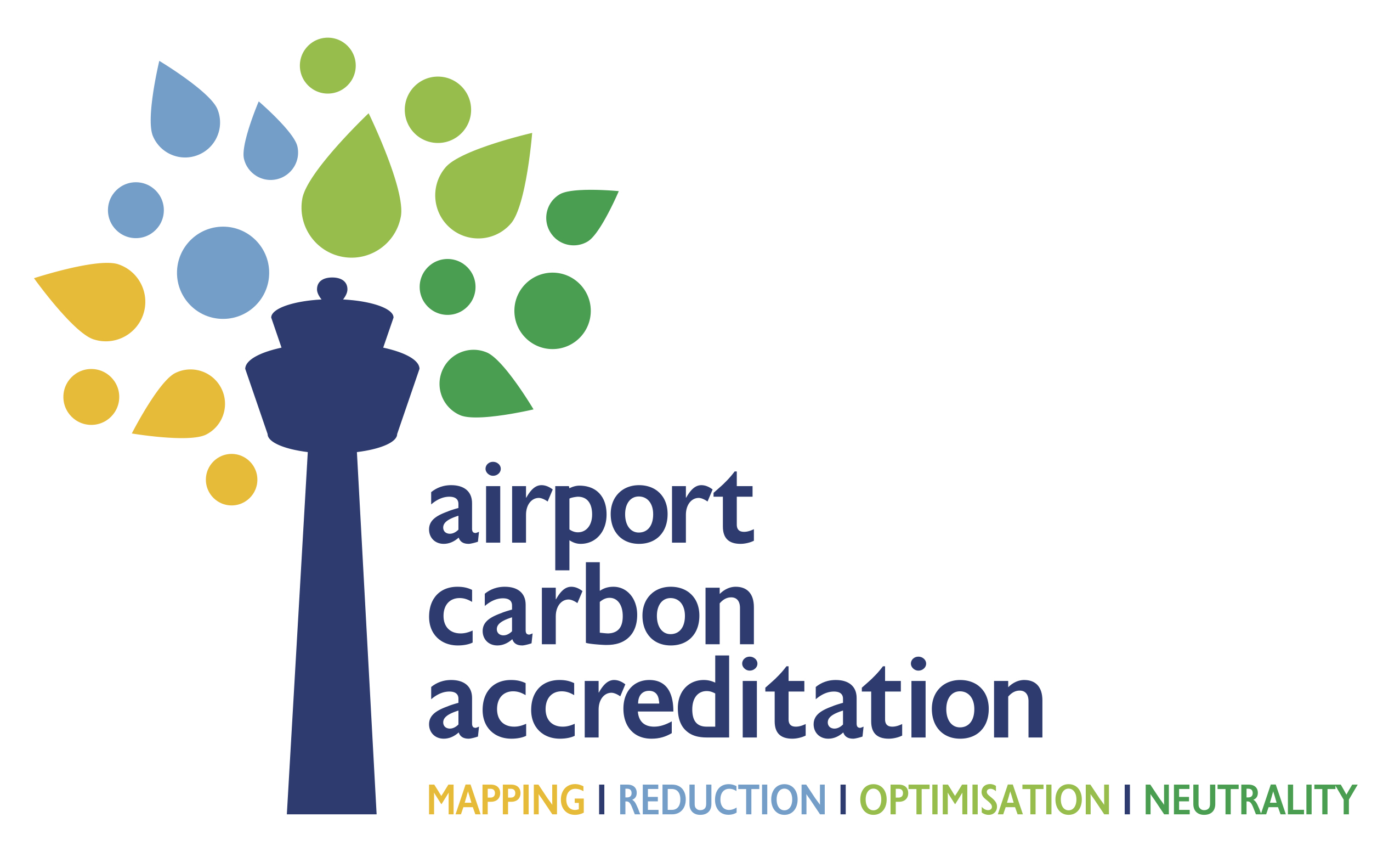• 61 airports are now carbon neutral (Level 3+)
As the 13th edition of ACI Airport Exchange, the global meeting of airport leaders, key industry suppliers and aviation stakeholders unrolls in Abu Dhabi, Airport Carbon Accreditation released the annual results of the collective carbon management delivered by accredited airports in its 10th consecutive year.
The past reporting year, running from May 2018 to May 2019, marked a round decade since the programme’s inception. The year ended with 274 accredited airports worldwide, an increase of +16% over the previous year, proving the stronger than ever drive of the airport industry to deliver on its commitment to lower its own CO2 emissions, made in 2007.
Since last May, 14 more airports have joined the programme and became certified at one of its 4 levels of accreditation (Mapping, Reduction, Optimisation & Neutrality) – rounding up the total number of accredited airports to 288 as of today. Out of these, 147 are in Europe, 53 in Asia-Pacific, 47 in North America, 27 in Latin America & the Caribbean and 14 in Africa.
Angela Gittens, Director General, ACI World said: “Airports have been hard at work to deliver tangible CO2 reductions through Airport Carbon Accreditation. It has been a decade since the launch of the programme and it keeps on growing - both in the number of airports coming on board and in the level of ambition for carbon management. In its tenth year, 49 participating airports upgraded to a more demanding level of accreditation, the highest ever reported.”
She added: “From May 2018 to May 2019, accredited airports succeeded in collectively reducing the CO2 emissions under their control by -322,297 tonnes1, a reduction of -4.9%. Additionally, the fifty airports at the highest level of Airport Carbon Accreditation contributed to a further reduction of -710,673 tonnes of CO2 in other sectors through offsets aimed at balancing out their residual emissions. Their choices in terms of offsetting were framed by our recently developed Offsetting Guidance Document2, which sets new requirements and recommendations to help them procure offsets of the highest quality.”
A dedicated section on carbon offsetting has been added to this year’s Airport Carbon Accreditation Annual Report in a bid to offer more detailed information on the particular projects supported by the accredited airports. It is important to note that prior to any CO2 offsetting, airport operators need to pursue every possible path of reducing emissions under their operational control. Investment in renewable energy, more energy efficient lighting & heating, switching to hybrid or electric ground vehicles & support equipment as well as spurring employee behavioural change are some examples of initiatives put in place by the certified airports.
Niclas Svenningsen, who heads the Climate Neutral Now initiative at the United Nations Framework Convention on Climate Change (UNFCCC) Secretariat commented “Air connectivity is an essential part of modern society, enabling people, business and communities to function together for the benefit of all. However, this mobility also poses some serious challenges, in particular in terms of climate change. By continuing their sterling work to address their emissions through Airport Carbon Accreditation, airports worldwide are showing that mobility and sustainability do not necessarily imply trade-offs. In the wake of the Climate Emergency, the need for non-State climate action has never been more burning. It is encouraging to witness the airport industry’s push for ambitious carbon management from within, which this year delivered a -4.9% reduction in CO2 emissions under their control. There is much that other industries can learn from this and even emulate.”
The Airport Carbon Accreditation Annual Report 2018-2019 is available to download under the following link. For the latest key figures, including details of the accredited airports in each world region, their actions and the difference the programme is making, visit www.airportco2.org.

